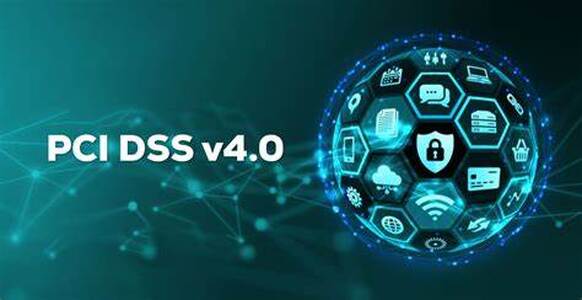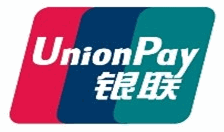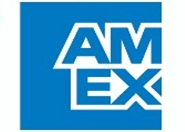PCI Version 4.0 - What You Need to Know

As the name suggests, PCI Compliance refers to a set of guidelines and standards for businesses to ensure the security of their credit card transactions. The Payment Card Industry Data Security Standard (PCI DSS) applies to companies of any size that accept credit card payments. Created by Visa, MasterCard, Discover, and American Express in 2004, the PCI DSS has evolved over the years to ensure that online sellers have the systems and processes in place to prevent data breaches.
The Payment Card Industry Data Security Standard (PCI DSS) Version 4.0 officially became the new standard on April 1, ushering in a new era for data security in payment transactions. This update comes at a critical time when cyber threats are increasingly sophisticated, emphasizing the need for stronger safeguards to protect sensitive cardholder data.
PCI DSS 4.0 introduces several key changes and enhancements aimed at improving the overall security posture of companies that handle payment card data. One of the most notable updates is the increased focus on authentication and authorization mechanisms, encouraging the use of multi-factor authentication and stronger password requirements. Additionally, the new standard places a greater emphasis on monitoring and logging practices, ensuring that businesses have the necessary tools and processes in place to detect and respond to security incidents promptly.
PCI compliance can be overwhelming to the average business owner because the reality is that to achieve PCI compliance, you must educate yourself on a variety of security protocols and processes. Fortunately, with a bit of help, you can successfully navigate these waters and achieve compliance in no time.
Businesses can use various tools to achieve PCI compliance; however, having a well-structured Compliance Checklist to implement PCI standards is critical and makes becoming compliant much easier. There are 12 mandates that every merchant should be familiar with. These are:
· Firewall - Protect cardholder data with a firewall. Every device interacting with cardholder data must have a firewall installed, protecting your network from outside attacks. This will ensure all transactions happen safely.
· Passwords - Immediately change passwords as soon as you receive them from the vendors. Have different passwords than those provided. Make it unique, use password management software to generate a random password, or use ‘three random words.’
· Data Protection - Protect stored cardholder information, both physical and digital.
Physical: Writing down physical data requires a strict process to prevent it from being in a situation it is not protected.
Digital: Digital data must be protected using encryption and firewalls.
· Encryption - PCI-compliant encryption is essential. Preventing data and information from being stolen during the transfer between the issuing bank and acquiring bank. Encrypt cardholder data that passes through open, public networks. Confirm POS encrypts this data.
· Anti-Virus Software - Install and update anti-virus software. It is great having anti-virus software, but if it is not updated and the latest versions, potential vulnerabilities will not be patched. Regularly use the virus scan option. Setup a repeatable checklist/process that you carry out monthly to scan and download or patch your software, so know you are up to date.
· Secure Systems - Implement a security checklist to ensure secure systems and applications. This process can be implemented to address any vulnerabilities and keep all your software up to date, such as firewalls, anti-virus software, apps, and POS.
· Cardholder Data - Only the need-to-know should access cardholder data. Keep employees’ access to cardholder data minimal to reduce the chance of a breach.
· ID permissions - Grant ID permissions to users with access to cardholder details. Assign unique IDs to each employee who needs access, enabling a way to track precisely who logs in and when.
· Physical Access - Physical access to cardholder information should be restricted and monitored. Remember to log out when leaving a terminal and add a timeout after a short period of inactivity is detected.
· Permissions - Track permissions to cardholder data and network resources. Track who is logged in when and consider surveillance for fraudulent activity.
· Security Processes - Test security processes and systems frequently. Create a security process checklist that employees must follow to protect data and regularly test this is still working and improve where needed.
· Security Policy - Develop an information security policy to consider the guidelines and a way to prove and track compliance. Policies and procedures should identify how standards are maintained for auditors to verify your compliance.
To make this easier to implement, businesses can follow these tips for meeting compliance requirements:
· Buy and use only approved PIN entry devices at your points of sale.
· Buy and use only validated payment software at your POS or website shopping cart.
· Do not store any sensitive cardholder data.
· Use a firewall on your network and PCs.
· Make sure your wireless router is password-protected and uses encryption.
· Use strong passwords. Be sure to change default passwords on hardware and software – most are unsafe.
· Regularly check PIN entry devices and PCs to ensure no one has installed rogue software or “skimming” devices.
· Teach your employees about security and protecting cardholder data.
· Follow the PCI Data Security Standard.
· Ensure peer-to-peer encryption.
Whatever the size of your business, PCI Compliance is a must. And PCI DSS 4.0 represents a significant step forward in the fight against cybercrime, providing your business with a comprehensive framework to protect payment card data and maintain the trust of your new and existing customers.
To learn more about PCI Compliance and assistance with navigating all things PCI, contact the team at MobiusPay today. We are here to answer all your questions!
Return to Blog








* Created by
